Appendix a - Waste Flows - Vale of Glamorgan Council
advertisement
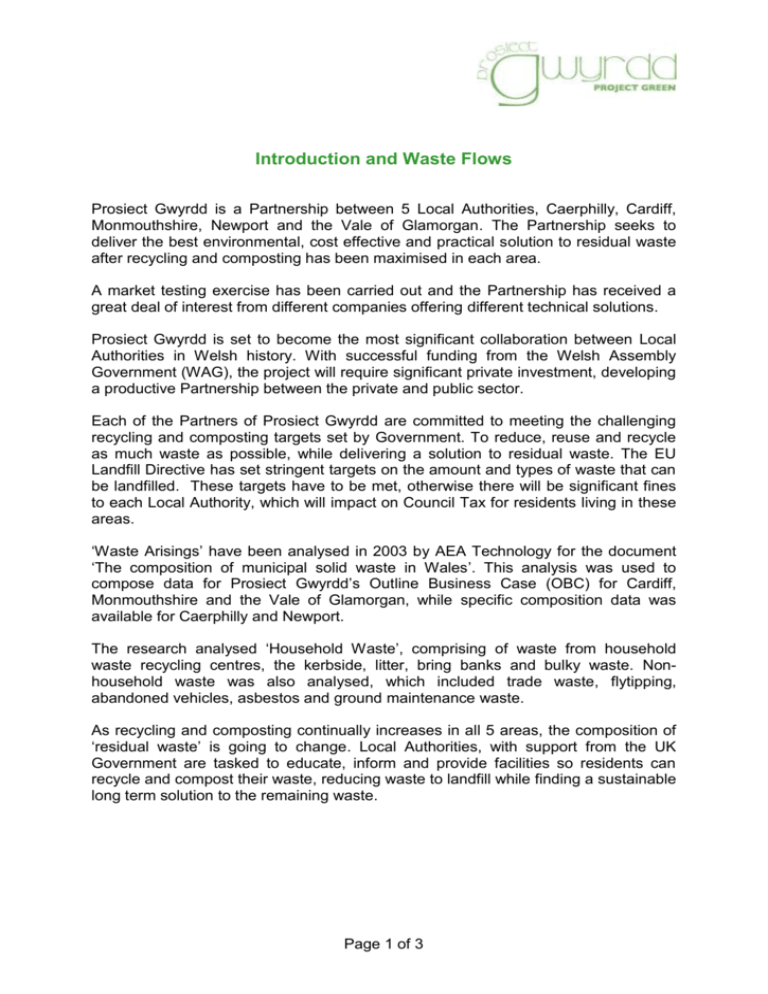
Introduction and Waste Flows Prosiect Gwyrdd is a Partnership between 5 Local Authorities, Caerphilly, Cardiff, Monmouthshire, Newport and the Vale of Glamorgan. The Partnership seeks to deliver the best environmental, cost effective and practical solution to residual waste after recycling and composting has been maximised in each area. A market testing exercise has been carried out and the Partnership has received a great deal of interest from different companies offering different technical solutions. Prosiect Gwyrdd is set to become the most significant collaboration between Local Authorities in Welsh history. With successful funding from the Welsh Assembly Government (WAG), the project will require significant private investment, developing a productive Partnership between the private and public sector. Each of the Partners of Prosiect Gwyrdd are committed to meeting the challenging recycling and composting targets set by Government. To reduce, reuse and recycle as much waste as possible, while delivering a solution to residual waste. The EU Landfill Directive has set stringent targets on the amount and types of waste that can be landfilled. These targets have to be met, otherwise there will be significant fines to each Local Authority, which will impact on Council Tax for residents living in these areas. ‘Waste Arisings’ have been analysed in 2003 by AEA Technology for the document ‘The composition of municipal solid waste in Wales’. This analysis was used to compose data for Prosiect Gwyrdd’s Outline Business Case (OBC) for Cardiff, Monmouthshire and the Vale of Glamorgan, while specific composition data was available for Caerphilly and Newport. The research analysed ‘Household Waste’, comprising of waste from household waste recycling centres, the kerbside, litter, bring banks and bulky waste. Nonhousehold waste was also analysed, which included trade waste, flytipping, abandoned vehicles, asbestos and ground maintenance waste. As recycling and composting continually increases in all 5 areas, the composition of ‘residual waste’ is going to change. Local Authorities, with support from the UK Government are tasked to educate, inform and provide facilities so residents can recycle and compost their waste, reducing waste to landfill while finding a sustainable long term solution to the remaining waste. Page 1 of 3 Since the 2003 survey AEA Technology carried out another survey (June 2009) on the current ‘Waste Arisings’ for the WAG. The public were split into18 classifications (demographics) and data was recorded on waste types making up the total municipal waste for the five Authorities. The new research will be combined with updated projections for the overall ‘arisings’ of municipal waste. This will provide the quantity and composition of the residual waste for the procurement. The analysis was done by analysing the types of waste that make up the municipal waste. These were identified in main categories with sub criteria explained for each. These were: Paper and card (With 11 sub criteria) Plastic film (with 3 sub criteria) Dense plastic (with 6 sub criteria) Textiles (with 3 criteria) Other combustible (with 10 sub criteria) Other non combustible (with 2 sub criteria) Glass (with 4 sub criteria) Biodegradable waste including food (with 11 sub criteria) Ferrous metal (with 3 sub criteria) Non Ferrous metal (with 4 sub criteria) 58 different wastes are identified in the research and 14 types of these wastes cannot be recycled and composted. This makes up the future residual waste. As recycling and composting continues to increase in Wales, there will be certain items that will have to be managed through a different process. These are: Wall paper Non-recyclable paper Non-recyclable card Expanded polystyrene Other non packing plastic Kitchen units Lino/tiles flooring Disposable nappies Incontinence products Other combustible Other non combustible Pet excrement and bedding Food still in its packaging Foil A solution has to be found for the remaining ‘residual waste’ and Prosiect Gwyrdd will be putting the requirements out to market on October 5. The Project is technology neutral and there seems to be a great deal of interest from different companies Page 2 of 3 offering different technical solutions. To understand more about the options available, please visit www.prosiectgwyrdd.co.uk Page 3 of 3
![School [recycling, compost, or waste reduction] case study](http://s3.studylib.net/store/data/005898792_1-08f8f34cac7a57869e865e0c3646f10a-300x300.png)
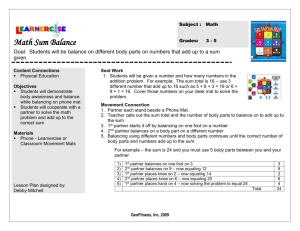

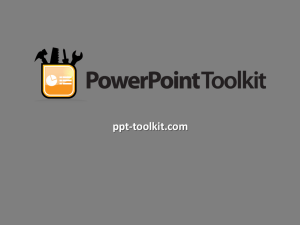
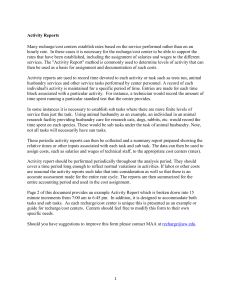

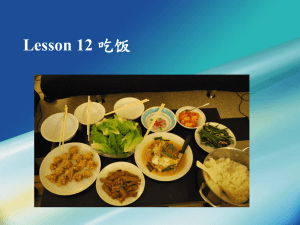
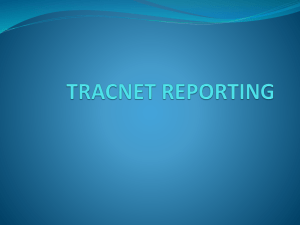
![Communication Plan Template [Word]](http://s3.studylib.net/store/data/006669223_1-b9c315d4402a309091c9c32f32b8ee30-300x300.png)
